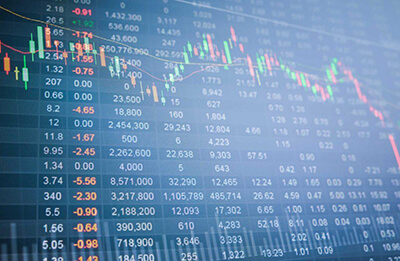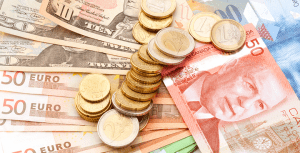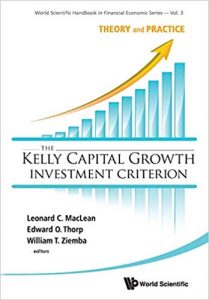Содержание

It can take months or years for the effects of the business plan on the portfolio companies to be reflected in valuations. The reason the J-Curve exists is because investment managers charge fees on committed capital prior to making any investments. Furthermore, investments are typically held at cost in the early years of the fund , as the manager needs time to implement their business plan. In most cases, a devaluation of a currency will have the desired effect over the longer term – an improvement in the current account balance . The J curve is usually discussed within economics to describe the way that a country’s balance of trade can initially decline following a depreciation of its currency.

Nave is a Kanban analytics suite that helps managers increase their team performance, identify bottlenecks with ease, and focus on improving flow efficiency. Nave uses the Kanban Method to reveal the fundamental characteristics of your workflows. We have enhanced the industry-standard analytical charts to help you manage your work using a data-driven approach. However, it’s up to you to evaluate what level of tolerance is the point that defines the success of your initiative.
Most Popular Terms
However, he didn’t stop there and has extended the model further to form the ‘Crypto-J-curve’ hypothesis. The crypto J-curve models how the market values a cryptocurrency over time. Usually, upon an Initial Coin Offering , or its initial listing on a major exchange, enthusiasm for a digital asset is high. Yet, during this time, the utility value of the coin is usually minimal, or even non-existent. Co-investments are direct investments into a portfolio company alongside a general partner.
Eventually, we roll back certain experiments if they prove that they don’t provide the results we expect. The approach encourages smaller “safe to fail” initiatives, which have a profound impact not only in terms of predictability, but also on the overall business outcomes. When we introduce change, our productivity will go down for a while as the team absorbs the change. There is a safety net that dictates how much productivity we can afford to lose.
What is J-curve and S curve?
Two types of population growth patterns may occur depending on specific environmental conditions: An exponential growth pattern (J curve) occurs in an ideal, unlimited environment. A logistic growth pattern (S curve) occurs when environmental pressures slow the rate of growth.
The J-curve theory recognizes that import and export quantities and prices are often arranged in advance and set into a contract. For example, an importer of watches is likely to enter into a contract with the foreign watch company to import a specific quantity over some future period. Such a contract provides assurances to the exporter that the watches he makes will be sold.
Contents
It’s her belief that entrepreneurs and micro and small business owners play a critical role in our communities, which propelled Melanie to return to private practice after more than a decade working for global financial institutions. Melanie’s practice is dedicated to delivering excellent legal support and protection to this vital, but an often underserved, community. Melanie credits her business training and the skills developed as a senior compliance officer with enabling her to help small business owners have a legally compliant business, while proactively advising clients during the growth process. She’s helped diverse entrepreneurs do business in a way that focuses more on collaboration than competition. Melanie has counseled small business owners in determining what is protection worthy and making contact on their behalf in the case of infringement. Of value of Turkish imports or quantity of Turkish imports, this is expected to fall in the long run after a Turkish lira depreciation according to the J-curve theory.
He is a professor of economics and has raised more than $4.5 billion in investment capital. The curve helps illustrate the outcomes of a situation or activity over a predetermined amount of time. Simply said, it illustrates that things will deteriorate before floor trader’s method they improve. The ‘openness’ of the economy in question is represented by the x-axis of the political J curve graph, while the y-axis represents the stability of the same state. Furthermore, international merchants will buy more things sold in their country.
What is the meaning of J-curve?
A J Curve is an economic theory which states that, under certain assumptions, a country's trade deficit will initially worsen after the depreciation of its currency—mainly because in the near term higher prices on imports will have a greater impact on total nominal imports than the reduced volume of imports.
The cashflows in this graph are based on several assumptions, are for illustrative purposes only and cannot be relied upon. The timing and amounts of actual cash flows can vary widely from this illustration and there is no guarantee of performance results. In the early years of a private equity fund, during what is known as the “Investment Period”, the investment manager works to source companies to acquire for the fund. Melanie Cunningham specializes in helping entrepreneurs remain creative and expansive by establishing the foundation of their business and protecting and maximizing their intellectual property.
Political science
The x-axis of the political J curve graph measures the ‘openness’ of the economy in question and the y-axis measures the stability of that same state. Although currency devaluation causes adverse consequences in the immediate future, it strengthens the overall economy over the period. In contrast, in the case of currency appreciation, the opposite takes place. The J-curve is useful to demonstrate the effects of an event or action over a set period of time. Put bluntly, it shows that things are going to get worse before they get better.
Exports are those products or services that are made in one country but purchased and consumed in another country. That means an initial decline in performance followed, at least theoretically, by a steep improvement in performance. Private equity firms have a different path to profitability than public companies or the funds that invest in them.
J Curve in Private Equity: How do Private Equity Funds Work?
It is referred to as the Davies J-Curve, because GDP growth followed by a recession or depression would be modeled as an upside-down and slightly skewed letter ‘J’. Frustrated expectations might be the result of a widening income gap within the nation, which means that individuals who are increasingly poor compared to their rich counterparts are receiving less than they expected. Ralph graduated from University of Florida with his JD as well as an LLM in Comparative Law.

Due to lag structure, currency devaluation is said to worsen the trade balance first and improve it later resulting in a pattern that resemble the letter J, hence the J-Curve phenomenon. Since its introduction by Magee in (Brooking Papers on Economic Activity, 1, pp. 303–25), a large number of studies have attempted to test the phenomenon using different techniques and different model specifications. The results are at best ambiguous and deserve to be collected together for the future generation of researchers and graduate students.
Step 1: Utility Management
This can be particularly daunting for newer entrants building out their first private markets portfolio. Without distributions from longer-tenured funds, years of negative and/or low returns would face the new private markets investor. By entering later in an investment lifecycle, and therefore closer to or during achievement of value accretion, such an initial dip is lessened in secondaries funds. The graph has a J-Curve following a devaluation because imports and exports change very little initially – this causes a bigger deficit or smaller surplus in the trade balance.
- The effect of currency depreciation on the trade deficit depends on price elasticity of demand for exports & imports.
- The demand for expensive imports and the demand for cheaper exports will be unchanged in the short run, as consumers look for cheaper alternatives.
- There have been many instances where equally intense discontent surfaced years before a revolt occurred but without the same consequences.
- If the trade balance had been deteriorating before devaluation, it will continue to deteriorate after devaluation.
- Immediately after the devaluation of a currency, there will be a lag in changing the consumption of imports.
Eventually, the fund will start to experience unrealized gains, followed over time by events in which the investment gains, such as initial public offerings , leveraged capitalizations, and M&As . A J curve is an economic theory which alleges that when currency loses its value https://forexbitcoin.info/ and trade value dramatically decreases, a dramatic improvement of trade is soon to follow. On a graph, a J curve depicts a rapid drop followed quickly with a dramatic incline. Returns begin to increase as the investment fund lives, starting to become a more mature portfolio.
A Must-Know: The Crypto J-Curve
However, due to energy imports and a lesser valued currency, the nation’s trade deficit increased to 1.3 trillion yen (US$12.7 billion). Because depreciation in a country’s currency affects import prices, the imbalance will widen. The first step to mitigating the impact of the J curve is to really understand it. Do your research and learn about the factors that have a strong influence on the returns, and develop your strategy around portfolio company selection and timing accordingly.

On the other hand, devaluation makes the price of American products more expensive for Indonesian buyers. For a USD1 dollar product, they have to pay IDR15,000, which is higher than the previous IDR14,000. In economics, J curve was first observed in the early 1970s by Stephen Magee. It is important to note that J curve is also observed in medicine or in political science. Then, as time goes on, export volumes begin to climb rapidly, and the reason for this is due to their pricing becoming more appealing to purchasers from other countries. Concurrently, domestic customers are purchasing fewer imported items owing to the increasing prices of imported goods.
The J-Curve effect was first observed in 1973 by Stephen Magee when the U.S. trade balance deteriorated in 1972 despite devaluation of the dollar in 1971. One question researchers have raised is how long it takes for the trade balance to experience an improvement after devaluation. Early studies employed aggregate trade data (i.e., export and import data between one country and the rest of the world) to test the phenomenon. Generally, these studies provided mixed results and were criticized as suffering from aggregation bias.
